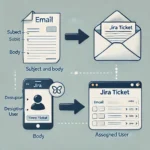APIs (Application Programming Interfaces) are essential for enabling communication between different systems and services. However, with their increasing use comes the need for robust security measures to protect against potential threats and vulnerabilities. API security testing is a critical aspect of maintaining the integrity, confidentiality, and availability of your applications. This comprehensive guide will explore best practices for API security testing, helping you ensure your APIs are secure and resilient against attacks. We will cover various aspects, including threat modeling, testing techniques, tools, and more, and provide answers to frequently asked questions related to API security.
1. Understanding API Security
API security is concerned with protecting APIs from threats and vulnerabilities that could compromise the security of the systems they interact with. This involves safeguarding data confidentiality, integrity, and availability while ensuring that only authorized users can access or manipulate the API. API security is crucial because vulnerabilities in APIs can lead to data breaches, unauthorized access, and other security incidents.
2. Why API Security Testing is Important
API security testing is essential for several reasons:
- Protect Sensitive Data: APIs often handle sensitive information, such as personal data, financial details, and authentication tokens. Security testing ensures this data is protected from unauthorized access.
- Prevent Unauthorized Access: Proper testing helps identify vulnerabilities that could allow unauthorized users to access restricted parts of the system.
- Mitigate Risks: Identifying and addressing security weaknesses early can prevent potential exploits and reduce the risk of attacks.
- Compliance: Security testing helps ensure compliance with industry regulations and standards, such as GDPR, HIPAA, and PCI-DSS.
3. Best Practices for API Security Testing
1. Threat Modeling
Threat modeling involves identifying potential threats to your API and assessing the risks associated with them. This process helps you understand the attack surface and prioritize security measures.
Steps for Effective Threat Modeling:
- Identify API Components: Map out the API’s components, including endpoints, data flows, and interactions.
- Identify Threats: Consider various types of threats, such as injection attacks, data breaches, and denial-of-service (DoS) attacks.
- Assess Risks: Evaluate the potential impact and likelihood of each threat. This will help you focus on high-risk areas.
- Define Mitigation Strategies: Develop strategies to address the identified threats and reduce the associated risks.
2. Use Secure Authentication and Authorization
Authentication and authorization are critical for ensuring that only legitimate users can access your API.
Best Practices:
- Use Strong Authentication Methods: Implement multi-factor authentication (MFA) and secure token-based authentication (e.g., OAuth2).
- Enforce Least Privilege: Ensure users and applications have the minimum level of access required for their role.
- Secure API Keys: Store API keys securely and avoid hardcoding them in source code.
3. Implement Rate Limiting
Rate limiting helps protect your API from abuse and overuse by restricting the number of requests a user or application can make in a given time period.
Best Practices:
- Set Rate Limits: Define appropriate rate limits based on your API’s capacity and expected usage patterns.
- Monitor and Adjust: Regularly monitor API usage and adjust rate limits as needed to balance performance and security.
4. Validate Input and Output
Input and output validation helps prevent common security vulnerabilities, such as injection attacks and data corruption.
Best Practices:
- Sanitize Input: Ensure all user inputs are validated and sanitized to prevent injection attacks.
- Validate Output: Check that output data does not include sensitive information or expose application logic.
5. Test for Common Vulnerabilities
Common vulnerabilities can pose significant risks to your API. Conduct thorough testing to identify and address these issues.
Common Vulnerabilities to Test For:
- SQL Injection: Ensure that user inputs cannot manipulate database queries.
- Cross-Site Scripting (XSS): Test for vulnerabilities that could allow attackers to inject malicious scripts.
- Cross-Site Request Forgery (CSRF): Verify that requests cannot be forged by unauthorized users.
6. Use HTTPS for Secure Communication
HTTPS ensures that data transmitted between the client and server is encrypted, protecting it from eavesdropping and tampering.
Best Practices:
- Enable HTTPS: Ensure that all API communication is conducted over HTTPS.
- Use Strong TLS Configurations: Configure TLS with strong ciphers and protocols to enhance security.
7. Conduct Regular Security Audits
Regular security audits help identify and address potential vulnerabilities before they can be exploited.
Best Practices:
- Schedule Audits: Perform regular security audits, both internally and with the help of external experts.
- Review Findings: Address any vulnerabilities or weaknesses identified during the audit.
8. Automate Security Testing
Automating security testing can improve efficiency and ensure that security checks are consistently applied.
Best Practices:
- Integrate with CI/CD Pipelines: Include security tests in your continuous integration and continuous deployment (CI/CD) pipelines.
- Use Automated Tools: Leverage automated security testing tools to identify vulnerabilities and assess risk.
9. Monitor and Log API Activity
Monitoring and logging API activity help detect and respond to potential security incidents in real-time.
Best Practices:
- Enable Logging: Implement logging to capture relevant information about API requests and responses.
- Monitor for Anomalies: Use monitoring tools to detect unusual patterns or behaviors that may indicate security issues.
10. Keep Up with Security Updates
Keeping your API and its dependencies up to date is crucial for protecting against known vulnerabilities.
Best Practices:
- Apply Patches: Regularly apply security patches and updates to your API and related software.
- Stay Informed: Monitor security advisories and updates from software vendors and relevant organizations.
4. Tools for API Security Testing
Several tools can assist with API security testing, ranging from vulnerability scanners to specialized security testing platforms.
Popular API Security Testing Tools:
- OWASP ZAP (Zed Attack Proxy): An open-source tool for finding vulnerabilities in web applications.
- Burp Suite: A comprehensive suite of tools for web security testing, including an API scanner.
- Postman: Although primarily a functional testing tool, Postman can be used for basic security testing and API exploration.
- Nessus: A vulnerability scanner that can identify security issues in APIs and other networked systems.
- Snyk: A tool for identifying and fixing vulnerabilities in code and dependencies, including APIs.
5. Common API Security Vulnerabilities
Understanding common vulnerabilities can help you focus your testing efforts and improve API security.
Common Vulnerabilities:
- Injection Attacks: Attacks that involve injecting malicious code into an API, such as SQL injection or command injection.
- Broken Authentication: Issues related to weak or improperly implemented authentication mechanisms.
- Sensitive Data Exposure: Inadequate protection of sensitive information, such as unencrypted data or exposed credentials.
- Broken Access Control: Insufficient restrictions on what users can access or modify within an API.
- Security Misconfiguration: Incorrect configurations that can expose an API to potential attacks.
6. Integrating API Security Testing into CI/CD Pipelines
Integrating API security testing into your CI/CD pipeline ensures that security checks are performed automatically as part of your development process.
Steps for Integration:
- Automate Security Tests: Include automated security tests in your CI/CD pipeline to identify vulnerabilities early.
- Set Up Alerts: Configure alerts to notify your team of security issues detected during the testing process.
- Review and Remediate: Regularly review test results and address any identified vulnerabilities before deployment.
7. FAQs
Q1: What is API security testing, and why is it important?
API security testing involves assessing APIs for vulnerabilities and weaknesses to ensure they are secure. It is important to protect sensitive data, prevent unauthorized access, and mitigate potential security risks.
Q2: What are the common tools used for API security testing?
Common tools include OWASP ZAP, Burp Suite, Postman, Nessus, and Snyk. These tools help identify vulnerabilities, test authentication mechanisms, and assess overall API security.
Q3: How often should API security testing be conducted?
API security testing should be conducted regularly, including during development, before deployment, and as part of ongoing maintenance. Regular testing helps identify and address new vulnerabilities as they arise.
Q4: What are some best practices for securing API communication?
Best practices include using HTTPS for encryption, implementing strong authentication and authorization mechanisms, and validating input and output data to prevent attacks.
Q5: How can I integrate API security testing into my CI/CD pipeline?
Integrate security tests into your CI/CD pipeline by automating tests, setting up alerts for security issues, and reviewing results as part of the deployment process.
Q6: What is threat modeling, and how does it help in API security testing?
Threat modeling is the process of identifying potential threats and vulnerabilities in an API. It helps prioritize security measures and focus testing efforts on high-risk areas.
Q7: What are some common API security vulnerabilities to test for?
Common vulnerabilities include SQL injection, cross-site scripting (XSS), cross-site request forgery (CSRF), and broken authentication or access control.
Q8: How can I ensure that my API security testing is effective?
Ensure effectiveness by using a combination of automated and manual testing, staying updated with security best practices, and regularly reviewing and addressing identified vulnerabilities.
Q9: What role does input validation play in API security?
Input validation helps prevent attacks by ensuring that all user inputs are checked and sanitized to avoid malicious code or data manipulation.
Q10: How do I stay informed about new security threats and vulnerabilities?
Stay informed by following security advisories, subscribing to security newsletters, participating in relevant forums, and keeping up with updates from software vendors.
Conclusion
API security testing is a crucial component of maintaining the security and integrity of your applications. By following best practices such as threat modeling, using secure authentication methods, implementing rate limiting, and automating security testing, you can protect your APIs from potential threats and vulnerabilities. Regularly testing and monitoring your APIs, staying informed about new security threats, and integrating security practices into your CI/CD pipeline will help ensure that your APIs remain secure and resilient against attacks.







